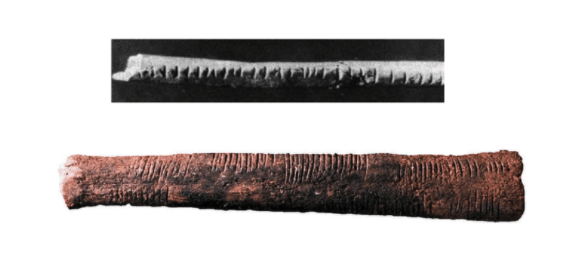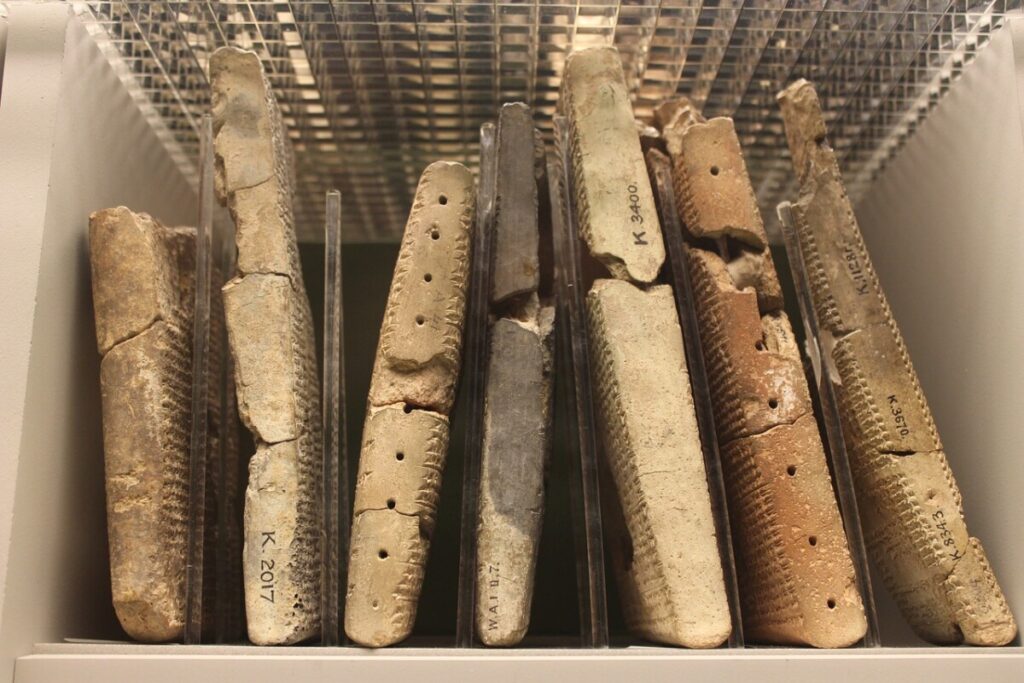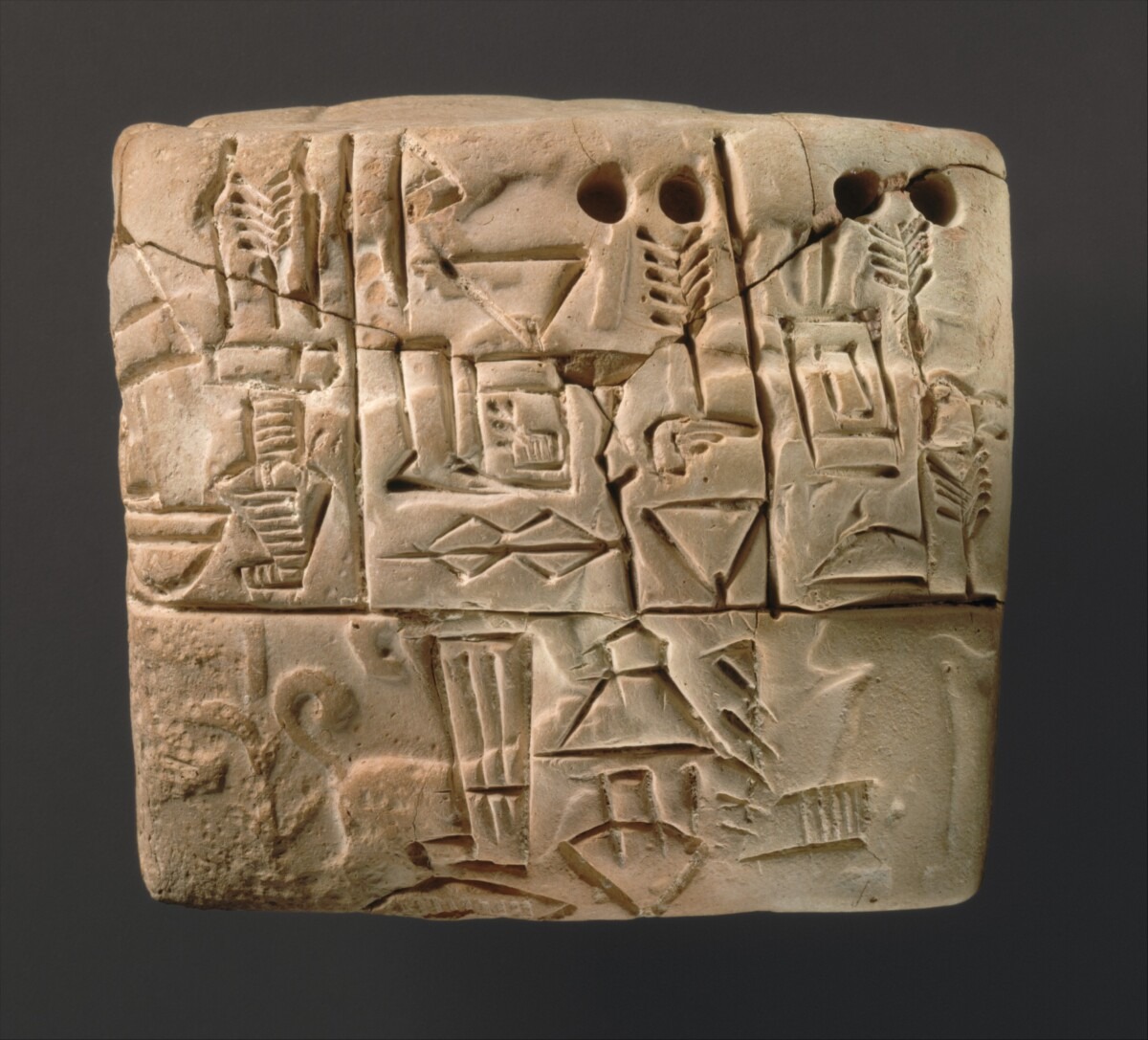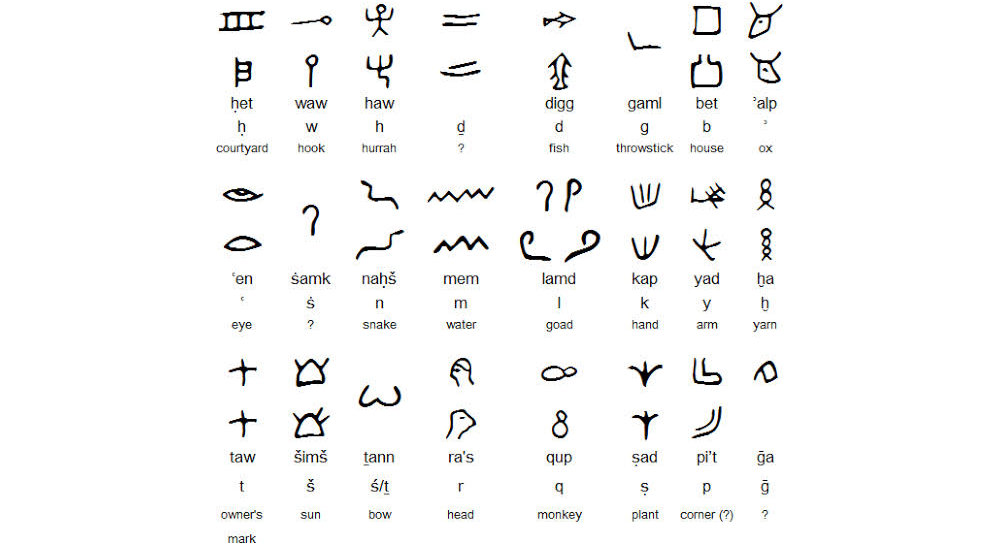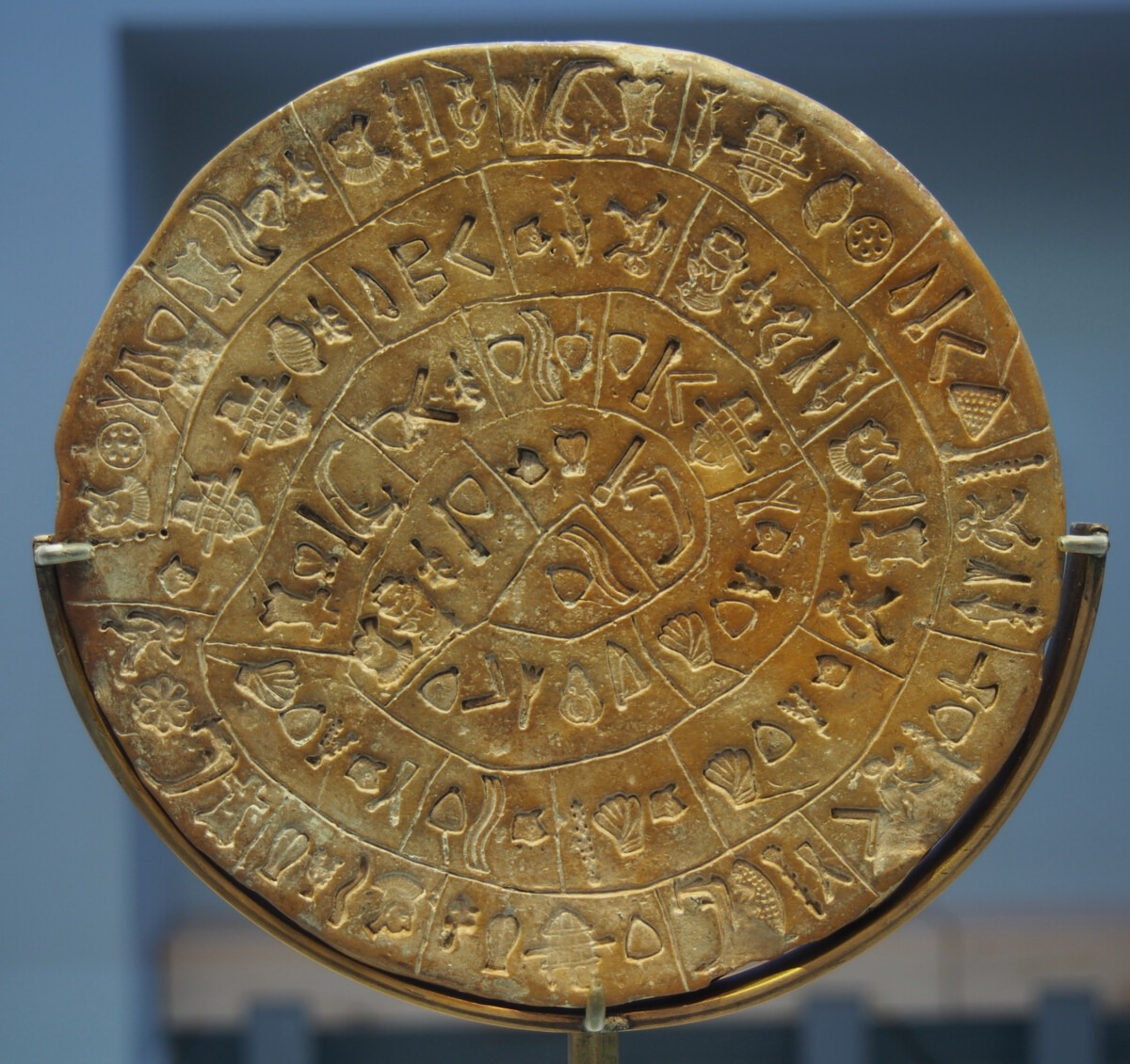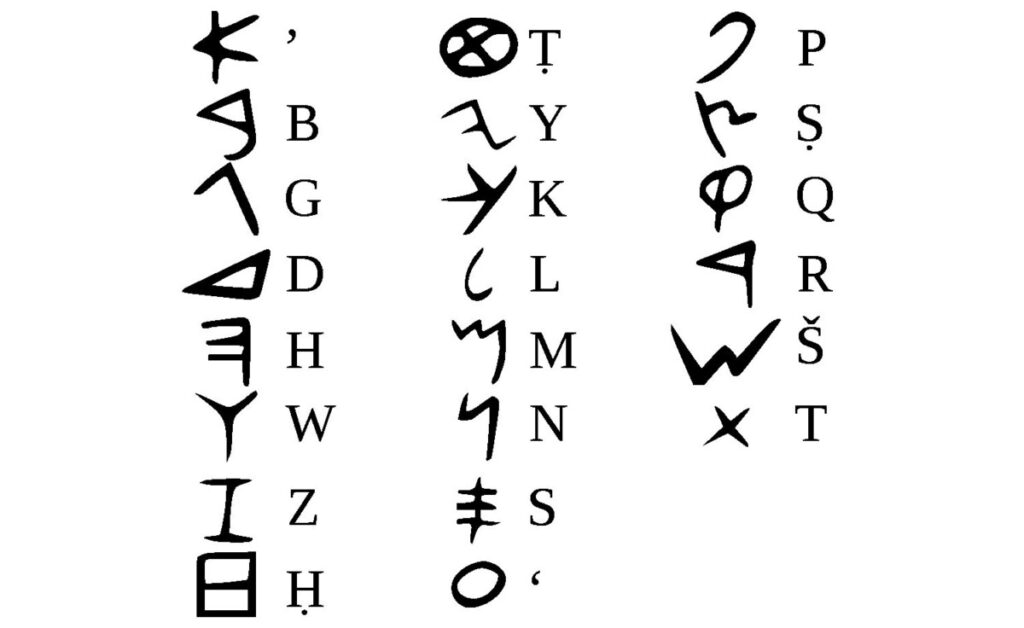This timeline represents some of the known, or at least accepted, events in journalism including language, writing, and printing. It’s purpose is to bring some sense of perspective to the known evolution of humans documenting their existence on Earth. This timeline is intended to help me personally with the big picture. I’ll update it as I learn new things and as new things are discovered. I hope you enjoy it and that it helps you too!
This timeline of journalism starts with a few notable events in human history. The purpose of these events is to give one a sense of how long humans have been speaking and sharing ideas. The documenting of our existence using writing systems started in prehistory. For this timeline I will use the terms proto-writing, primitive writing, and complex writing to categorize writing systems. The use of simple identifying symbols is known as proto-writing. Proto-writing evolved into primitive writing capable of documenting simple ideas. Primitive writing expanded and at the point they could document complex ideas they became a complex writing system. Perhaps not equal to modern writing systems, but in the ballpark.
To open our minds, let’s speculate a bit. Although the archeological record is slim, one can speculate that early proto-writing, the use of simple symbols, started as soon as our ancestors could talk, circa 700,000 BCE. We can also speculate that the use of symbols evolved frequently into primitive writing systems throughout prehistory.
Although speculative, I personally have no doubt that proto-writing existed long before the archeological record indicates. I also have no doubt that it evolved into primitive writing many thousands of times. If I were to guess, I would guess proto-writing and primitive writing systems started within a few generations of the first stable communities sometime between 700,000 to 150,000 BCE. I can imagine simpler complex writing systems capable of documenting complex ideas existing at various times from perhaps 500,000 BCE through to 3500 BCE with the earliest known complex writing system of cuneiform.
The Lebombo Bone is one of the oldest known mathematical artifacts in human history. This ancient tool is a baboon fibula with 29 distinct notches carved into it. It was discovered in the Lebombo Mountains between South Africa and Swaziland. It was initially dated to approximately 35,000 years, but 24 radiocarbon tests since date it back about 44,000 years.
The Lebombo Bone was potentially used as a lunar phase counter or a simple tally stick. The series of notches may represent a lunar calendar, which would imply that early humans were tracking lunar phases for either ritualistic purposes or as a practical method for keeping time, possibly related to menstrual cycles or seasonal changes.
This artifact belongs to the Middle Stone Age, a period characterized by the development of more advanced stone tool technologies and the emergence of modern human behavior, including symbolic thought and perhaps early forms of arithmetic. The Lebombo Bone suggests that early humans engaged in complex thinking and had the capacity for abstract thought and planning.
The discovery of the Lebombo Bone and similar artifacts underscores the cognitive capabilities of early humans and their ability to use numerical concepts long before the development of written language or formal systems of numeration. This artifact, along with others like the Ishango Bone from Central Africa, indicates that the concept of counting and numerical recording was a part of human culture across different regions of Africa tens of thousands of years ago.
Potential earliest writing in Asian zone: the Oracle Bone Script, circa 1250 BCE is oldest confirmed.
These symbols which are radiocarbon dated to the 7th millennium BCE have similarities to the late 2nd millennium BCE oracle bone script. Put this writing in the MAYBE column. Scientists are still going through a process to verify this claim. If we can discover some intermediate links, yes, more missing links, we can firm up these symbols as early writing. They were discovered in 2003 on tortoise shells found in 24 Neolithic graves excavated in Jiahu, Henan province, northern China.
Earliest known writing in Africa/Middle East zone.
Human DNA today is the same as 50,000 BCE. There is no doubt there were many dozens and perhaps thousands of civilizations prior to the Sumer civilization, but Sumer is the earliest known, or at least the earliest well known. The Sumer civilization first established between 6500 and 4100 BCE. We know quite a bit about the Sumerians because they immortalized their writing in clay tablets which will be around long after all the paper books on Earth right now have deteriorated. Sadly, we know almost nothing about prior civilizations because very little evidence survived the test of time. The Sumerians spoke and wrote Sumer and starting several millennia into their civilization they started immortalizing their culture on clay. They had an advanced democracy with elected officials, religion, art, wheel, math, philosophy, and language. The Cuneiform script was in use until 100 CE.
Earliest undeciphered writing in the Asian zone.
The Indus Valley script, emerging around 2600 BCE in one of the world’s earliest urban civilizations, remains one of archaeology’s greatest puzzles. Found across a vast expanse from today’s northeast Afghanistan to Pakistan and northwest India, this script comprises over 400 unique symbols, ranging from geometric shapes to plant-like and animal motifs. Inscribed on a variety of objects including seals, pottery, and metal tools, these markings suggest a sophisticated system of communication used for trade, administration, or ritual purposes.
17,000 fragments totally maybe 2,500 tablets, discoved in the 1970s, only a few hundred have been translated.
The library of Ebla, located in the ancient city of the same name was located in modern-day Syria. This library dates back to the 24th century BCE and contained thousands of clay tablets written in Sumerian and Eblaite, providing a wealth of information about the culture, economy, and administration of Ebla. These tablets were discovered in the 1970s and offered significant insights into the early periods of human writing and civilization. The Ebla library predates other famous ancient libraries, such as the library of Ashurbanipal in Nineveh and the Library of Alexandria, showcasing the deep historical roots of library institutions as centers of knowledge and record-keeping.
The Proto-Sinaitic alphabet is considered the earliest trace of alphabetic writing and the common ancestor of both Ancient South Arabian script and the Phoenician alphabet. The ancient South Arabian script evolved about 900 BCE which continued to evolve into today’s Modern South Arabian languages. The Phoenician alphabet evolved into the Greek alphabet and all of today’s Western alphabets.
Earliest known writing in the European/Mediterranean zone.
The earliest known writing system in the European/Mediterranean zone is the Cretan Hieroglyphic script from ancient Crete, part of the Minoan civilization. This script dates back to around 1900 BC to 1700 BC. Closely related and slightly later in development is Linear A, which emerged around 1800 BC and was also used by the Minoans.
These scripts were used primarily on the island of Crete and remain largely undeciphered, making it difficult to fully understand their content and purpose. Linear A, in particular, appears to have been used for administrative and religious purposes. Following these, the Mycenaean civilization developed Linear B, derived from Linear A, which has been deciphered as an early form of Greek and dates back to around 1450 BC. Linear B provides substantial insights into the administrative, economic, and daily activities of the Mycenaean Greeks.

The Phoenician alphabet is a direct continuation of the Proto-Canaanite script circa 1300 BCE. Starting about 900 BCE, the Phoenician alphabet thrived and was adapted by others. It evolved into use by many languages including Greek, Old Italic and Anatolian scripts. These early uses of the alphabet evolved into the alphanumeric alphabet.
Earliest deciphered writing in Asian zone: Indus Valley writing, undeciphered, predates this to circa 2600 BCE.
The earliest known writing system in Asia is typically considered to be the Oracle Bone Script from ancient China. This script was used during the Shang Dynasty around 1200 BCE, but evidence suggests it may have developed as early as 1250 BCE or earlier. Oracle Bone Script was primarily used for divination purposes and was carved on animal bones or turtle shells. These artifacts, known as oracle bones, were used to communicate with ancestors and gods to ask about weather, crop planting, the fortune of the kingdom, and other issues of state and religious importance. The script is a direct precursor to modern Chinese characters, making it not only one of the oldest forms of writing in Asia but also a foundational element of one of the world’s continuously used writing systems.
Earliest known writing in the Americas zone.
The Olmec civilization flourished in what is now the southeastern part of Mexico from around 1500 BC to about 400 BC. The Olmecs are often referred to as the “Mother Culture” of Mesoamerica, influencing later civilizations like the Maya and the Aztecs.
The Cascajal Block artifact, dated to around 900 BCE, bears 62 symbols carved into it that some researchers believe represent the earliest form of writing in the New World.
Spaces between words started circa 1000 CE because those copying texts found it easier and faster to copy if they introduced spaces between words. The 1215 Magna Carta is a good example of this quality of writing which included word-spacing, uppercase, and lowercase, but no punctuation, nor paragraphs.
Spaces between words started circa 800 CE. Over the next few centuries, writing evolved. By the invention of the printing press in 1440, we had punctuation pretty similar to today’s standard. About halfway, at the time of the Magna Carta in 1215, we still had mostly uppercase with spaces between words and an occasional period. Punctuation and spelling mostly standardized starting in the 1300s for the next century, just in time for the printing press.
Image: First page of “On the Revolutions of the Celestial Spheres” by Nicolaus Copernicus, 1543.
The story of the printing press is the story of cultural transmission. Invented in 1440 in Germany by Johannes Gutenberg, it revolutionized book production by introducing movable type. It replaced hand-copying, prone to errors, with movable metal type, allowing mass production of books for the first time in human history.
Over the next few centuries, the printing press went on to standardize writing like never before, including spelling and punctuation. Prior to the printing press, writing evolved spaces starting around 800 CE. By the invention of the printing press, we had punctuation pretty similar to today’s standard. About halfway, at the time of the Magna Carta in 1215, we still had mostly uppercase with spaces between words and an occasional period. Punctuation and spelling mostly standardized starting in the 1300s for the next century, just in time for the printing press.
30 Phil, Chapter 26, Voltaire, Touchstone 67: Fourth Estate.
The fourth estate refers to the role of media in society. During Voltaire’s time, the seeds were being sown for the concept of the fourth estate. This was due in part to his tireless advocacy for freedom of speech and the press, an echo of the force of public opinion.
30 Phil, Chapter 26, Voltaire, Touchstone 68: Journalism.
Journalism serves as a check on power, and is one of the Truth Hammers. Unlike the scientific method, which is grounded in experimentation, journalism thrives on investigation and storytelling. It doesn’t just present facts; it contextualizes them, weaving narratives that help society understand complex issues.



